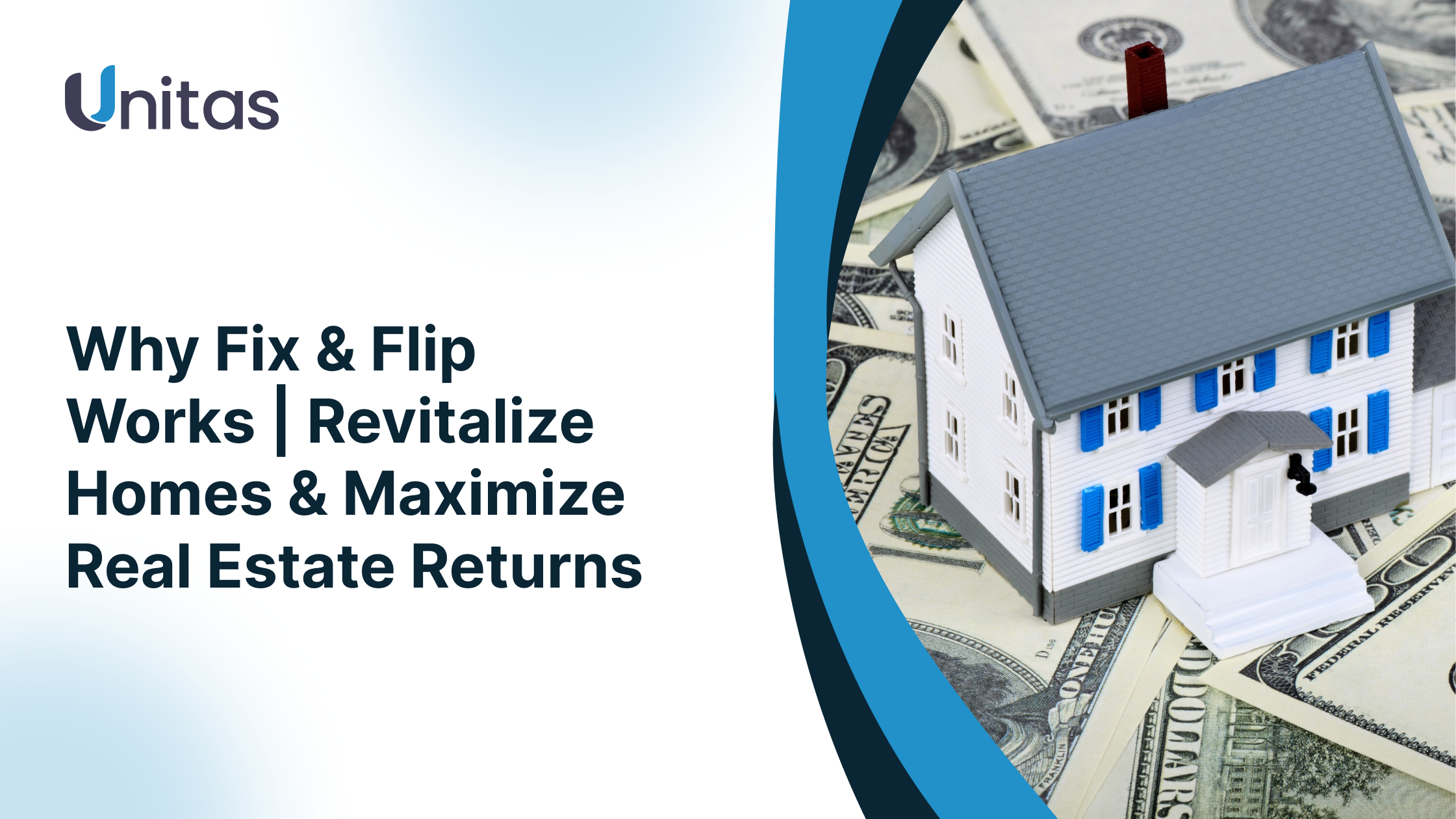
Why Fix & Flip Investing Works | Revitalize Homes & Maximize Real Estate Returns with Fix & Flip Lending
Demand for quality housing continues to outpace supply across the country. The first solution that springs to mind might be building from scratch to fill that void, but we believe an opportunity resides in breathing new life into the homes we already have.
The purpose of the “fix and flip” project is taking existing homes that need attention and transforming them into desirable, move-in-ready properties. Fix and flip investing not only supports community revitalization but also offers strong, accessible opportunities for profit.
At its core, a fix and flip is simple: purchase a home in need of updates, make renovations, and then sell it at a profit. Many of these properties are “seasoned” homes, often built before 1980, that haven’t kept pace with today’s buyer expectations. More than half of U.S. homes were built before 1980, which means millions of properties still have outdated layouts, worn finishes, and older systems. Today’s buyers want open floor plans, larger kitchens, modern finishes, and functional common spaces.
A thoughtful fix and flip bridges the gap between yesterday’s design and today’s lifestyle.
Unlike the overbuilding that contributed to the 2008 housing crisis, fix and flips rely on existing inventory. By improving what’s already standing, fix and flip investors can reduce the risk of flooding the market with excess new homes. Instead, they’re upgrading supply that’s already in demand. This strategy also addresses housing shortages without the long timelines and higher costs of new construction. Cosmetic improvements like new flooring, fresh paint, updated kitchens and bathrooms combined with durable finishes and strong curb appeal make a property far more attractive to modern buyers.
Fix and flips are accessible to a wide range of investors, but success comes down to mindset and planning.
It’s critical to understand whether the property will serve a renter or a buyer, and to channel your efforts accordingly. Renters typically value durability and functionality, while buyers may prioritize style and finishes. First impressions matter, and a fresh exterior can be just as important as a modernized interior.
Even with home improvement and remodeling loans in your arsenal of tools, budgeting wisely is critical, since cost overruns are one of the biggest risks in fix and flips. Build in a contingency fund for materials, labor, and unexpected issues, and always research local preferences, so your improvements align with buyer demand.
Like any investment, fix and flips aren’t without challenges. Tariffs on imports including drywall and lumber can increase budgets by 20–30%. Workforce constraints can slow timelines and raise costs. Higher interest rates, while less impactful than in traditional homebuying, still affect carrying costs and influence buyer behavior. These challenges also create opportunities for well-prepared fix and flip investors. Those who partner with experienced lenders and contractors and account for these factors upfront can still generate strong, reliable returns.
With thoughtful planning and the right financing partner, fix and flips are an accessible, rewarding strategy for investors at every level. At Unitas Funding, our lenders support fix and flip investors through every stage of the process, helping you turn seasoned properties into modern homes buyers are eager to call their own.
Article written by John V. Santili
Chief Production Officer at Unitas Funding John oversees loan operations and project execution at Unitas Funding, ensuring each deal moves smoothly from approval to close. With 20+ years of experience in real estate finance, he focuses on efficiency, compliance, and client satisfaction.